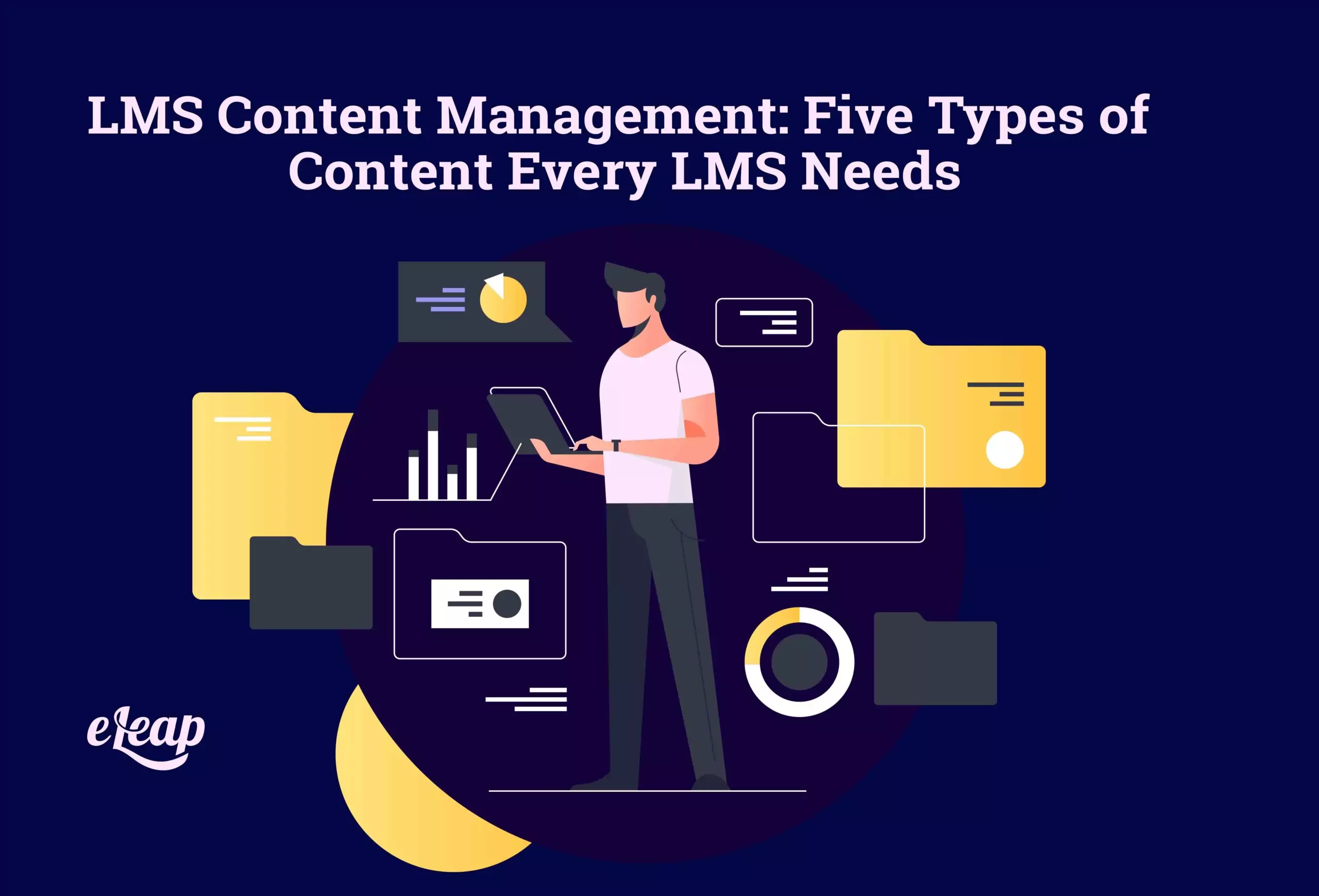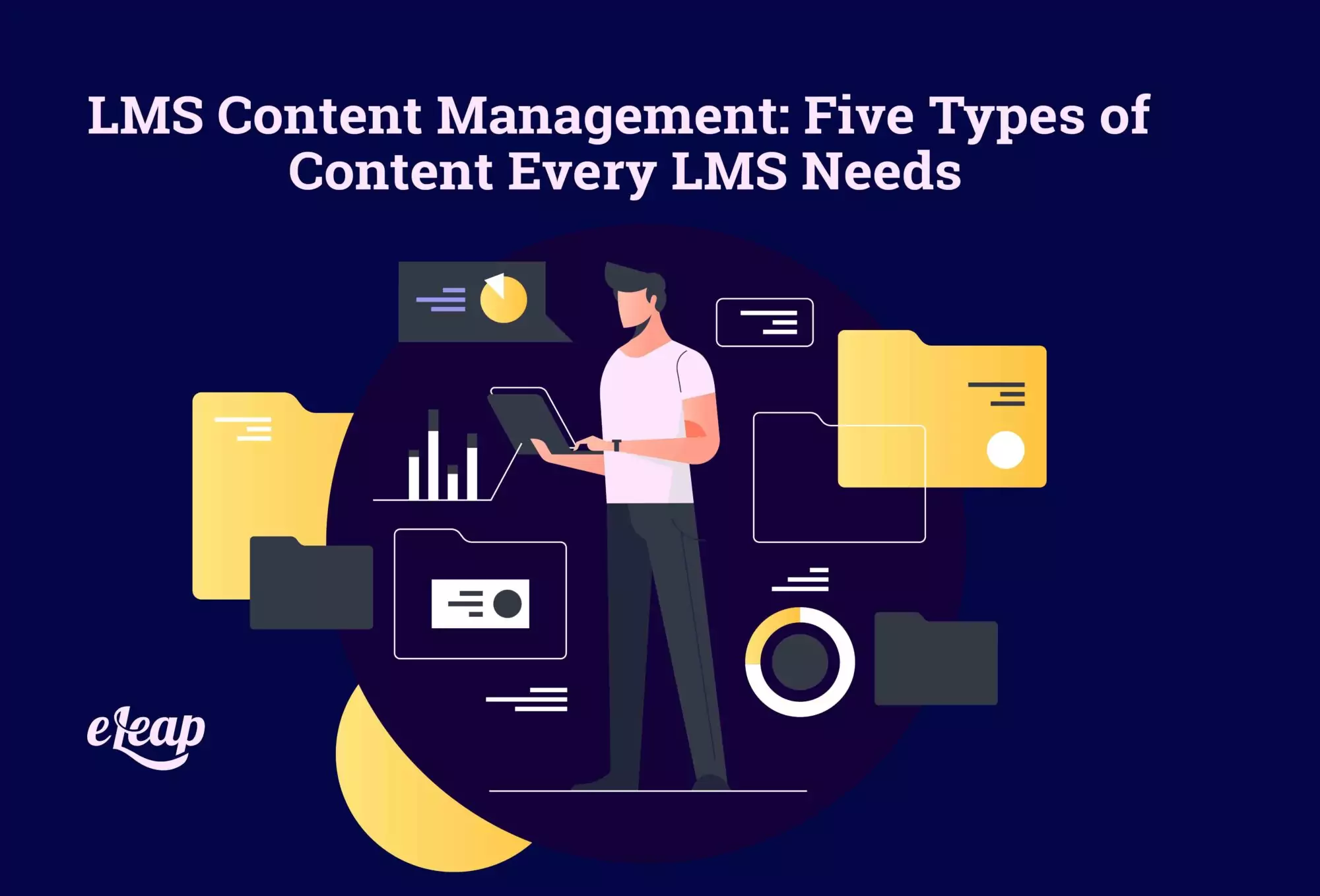LMS Content Management: Five Types of Content Every LMS Needs

Choosing and setting up an LMS is no easy feat—there’s a reason that there are hosted solutions available. However, once the basic structure is in place, anyone in the organization should be able to easily alter, add, or remove content (provided that they have the authority to do so, of course). Cloud-based LMSs offer organizations the chance to roll out training quickly and efficiently, to employees around the globe. Getting started with an LMS is one thing, but long-term content strategies are often overlooked.
For organizations that want to integrate a successful training platform, a roadmap and strategy for content development and management over time. The LMS isn’t just for new employees that are coming into the organization. It’s a tool that all employees (including managers) can use to improve their skills, education, and expertise in their current roles as well as in roles that they move through within the organization.
The list of content options for the learning management system is long. However, here are some of the most critical and valuable ones that should be on every organization’s list.

Off-the-Shelf Content
While some leaders and managers don’t see the value of prefabricated learning content, there is actually a lot that you can use if you take the time to look. Plus, off-the-shelf content is easy because it’s ready to go. Simply buy, deploy, and let the learning commence. You don’t have to worry about customized modules or the pricing that often comes with custom content creation. Plus, it gives those new to the world of LMSs a chance to see what kind of content is required in a quality LMS.
Customized Content
It’s about creating balance. As much as companies can benefit from off-the-shelf content, there is also a case, as well as a time and place, for customized training and learning content. Custom content can include everything from unique quizzes and exams to custom slideshows, training modules, and even a fully white-label LMS platform. The goal is to deliver content that is on point with the organization’s goals and objectives, as well as that addresses everything employees need to know in order to perform their best for the organization.
Custom content is a bit pricier, but you’ll be happy to know that you don’t need to customize the entire LMS from the ground up if that’s out of your budget range. There are plenty of ways to embrace hosted learning management systems that already have a framework in place. Then, you can just fill in the gaps and go.
Webinars and Live Training
Take advantage of the virtual nature of the modern LMS and embrace live training without an in-person live interaction required. Thanks to the Internet, companies can now host virtual training events and webinars from anywhere in the world and broadcast them to employees everywhere. Most organizations do well with a good mix of prerecorded content and live content, both in classroom format and in webinar format.
It’s about taking the old ways of doing things and making them new again. Webinars give you the chance to present a subject and educate people on a topic in a professional manner. Live training classes or one-on-one training sessions ensure that people get that sense of connection that can help them learn and retain information better.
Videos
Videos have been used for employee training and development for decades. Today, however, video is used differently than before. No longer are employees sitting around watching hours-long training videos to learn all about their new organization and their new role within the company. Instead, there are videos incorporated into the overall onboarding strategy and L&D plan that includes other content like that which is discussed here.
Videos are great because they come in all kinds of formats and can even be used for microlearning by creating short clips at relevant intervals or as part of a bigger training module.
VR and AR Simulations
In training classes in years past, teams were tasked with taking their training and applying it to “real world” scenarios by partnering with other trainees and applying what they had learned. Today, this is still one of the best ways to test for retention and help people remember what they are learning. However, if you’re using virtual or online training through an LMS, that application may be upgraded to a VR or AR simulation (virtual or augmented reality) that gives people real-time practical experience regarding what they’ve learned.
VR and AR are newer training tools, but they are becoming quite popular in workplaces where training requires engagement and not just sitting at a desk being lectured about company policies and learning about job duties. Using augmented or virtual reality, organizations can create exact scenarios that employees will encounter and then deliver training and education on how to handle or complete these scenarios.
What About UGC?
There is one type of content that many people question as part of the LMS, but it’s actually proven to be quite useful. Plus, it makes employees feel more valuable because they are contributing something. Once organizations have an LMS up and working, it’s important to start a forum or other database for user-generated content, or UGC. This could be in the form of a written post, a video share, or even the creation of a new training module or resource for other employees.
Some companies are on the fence about letting users create content because that requires more moderation and oversight, but it has proven to be quite successful. The LMS works because it creates a space that people can be a part of. If they are allowed to also offer insight and training resources, they’ll feel even more a part of it, and it will become infinitely more successful.
The Options are Endless
Of course, there are dozens of various kinds of content that organizations can add to their LMS. This is just a list of the most popular and most effective options out there today. A well-developed and dynamic LMS can do far more for an organization and its employees than most people realize. Here at eLeaP, we can provide you with the solutions you need to improve your employee training program and garner your results. Go ahead and set up a 30 day free trial today to check out how our system can work for you and your team!